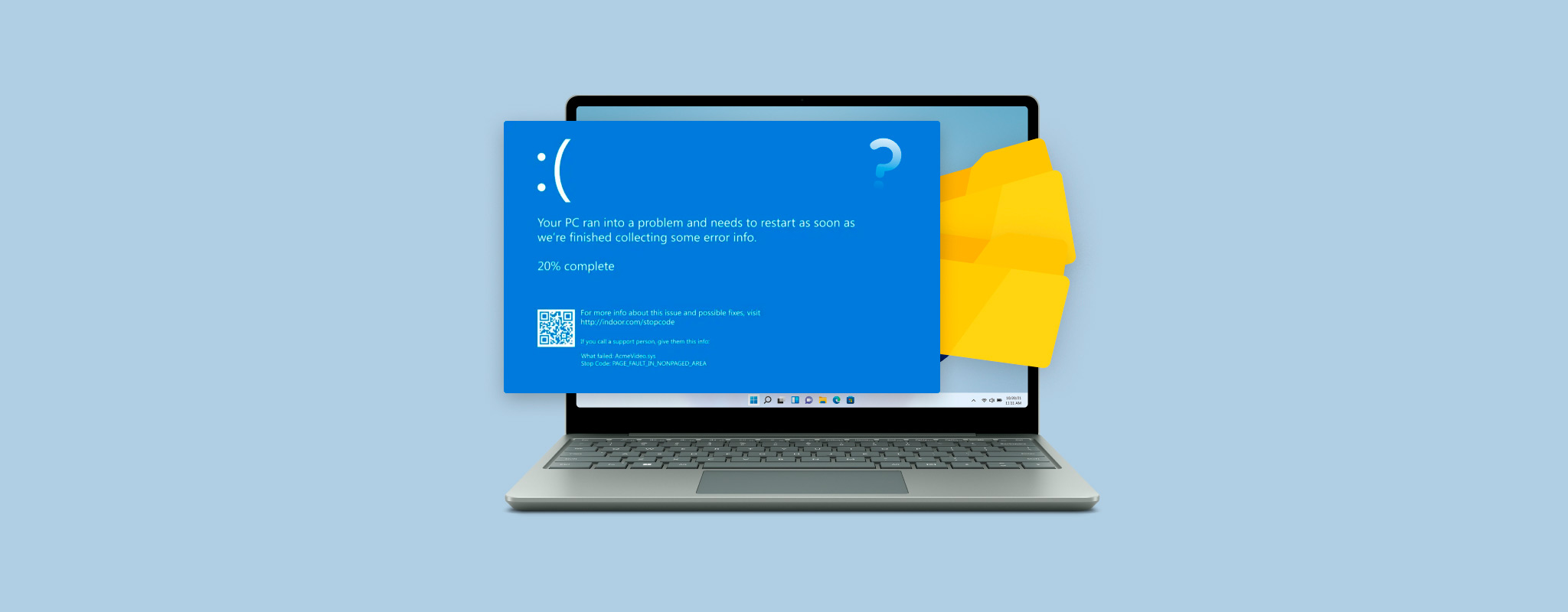 Were you working on something when your computer suddenly shuts down out of the blue? It’s likely that you’ve just experienced a computer crash, also known as a system crash. A computer crash can occur for many reasons, but none of them are good. Severe ones can even result in data loss.
Were you working on something when your computer suddenly shuts down out of the blue? It’s likely that you’ve just experienced a computer crash, also known as a system crash. A computer crash can occur for many reasons, but none of them are good. Severe ones can even result in data loss.
The good news is that all hope is not lost. We’re going to explain why computers can sometimes crash, and how you can recover files after a computer crashes.
Table of Contents
What is a Computer Crash Down
Before you can understand how to fix a crashed computer, you should try and figure out what caused it first. Here are some of the most common reasons why computers crash:
| Reason | Description |
| 💾 Problematic RAM | If your RAM isn’t seated correctly, or it has become damaged, then your computer won’t be able to function properly, as it will crash every time you try to boot. |
| 🔧 Corrupted or outdated drivers | Without drivers to handle the communication between your hardware and operating system, your hardware will be undetectable and result in repeated crashes. |
| ❌ A failing hard drive | If a physical component of your hard drive has failed, like the drive motor or read/write head, your computer will stop working and refuse to boot correctly. |
| 🦠 Malware infection | Malware can do a number of worrying things to your PC, including corrupting your file system. If a part that’s critical to the performance of your computer has been infected by malware, it may cause your computer to become inoperable. |
| 🔥 System overheating | The hardware in your computer is only rated to work within a specific temperature range. Improper ventilation can cause your computer to overheat, causing erratic performance and crashes. |
After booting your computer following a crash, you may notice that some of your data has become lost or deleted, either as a result of the crash or the damage that caused the crash. We’re going to show ways to recover your data before it’s too late.
How to Recover Unsaved Files After One-Time Crash
If your computer crashes, but boots successfully afterward, then your unsaved files are likely to be lost for good. However, the crash may have affected other files stored on your drive, causing them to be lost or deleted. In this case, you have a chance of recovering them using the methods below.
Method 1: Use Data Recovery Tool
You may notice that you’ve lost some files after your computer crashed. In this case, you should immediately recover the data from the crashed drive before it becomes permanently lost. To do this, we’ll be using the data recovery tool Disk Drill.
We recommend Disk Drill as it excels at recovering any of your data that was lost due to a system crash. After experiencing a system crash, your drive may suffer from file system corruption or logical damage that blocks access to your data. Disk Drill’s all-in-one scanner can bypass these issues and get direct access to your data. Better yet, the scanner utilizes multiple scan modes, increasing your chances of finding more data. Furthermore, if it’s your system drive that’s compromised, it lets you access the files without booting Windows once connected as an external device.
These steps will help you to recover data from a crashed PC using Disk Drill:
- Download and install Disk Drill (to a healthy, unaffected drive).
- Select the crashed drive and click Search for lost data. If your drive is in a particularly unstable state, consider making a full copy using the free Drive Backup feature first.

- Click Review found items. You also have the choice of recovering everything at once or clicking one of the colored file type icons to automatically filter the results screen.

- Select the files you want to recover from the crashed drive. Existing data can be found in the Existing dropdown, whereas deleted or reconstructed files can be found in the respective Deleted or lost and Reconstructed dropdowns. When you’re ready, click Recover.

- Choose a safe location for recovery on a separate storage device, then click Next to complete recovery.
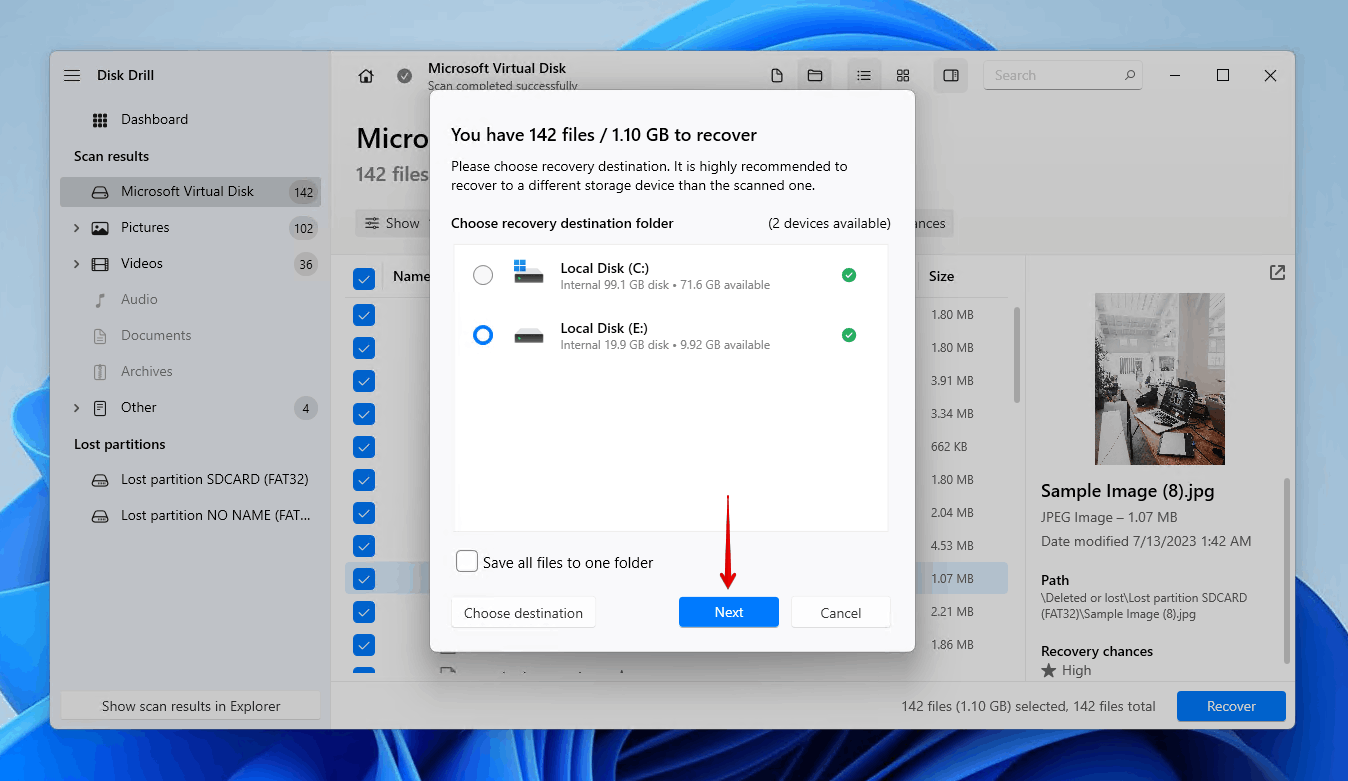
Method 2: Use App-Specific Backup Options
Some programs, like Office 365, OpenOffice, and Adobe Illustrator, include automatic backup features that take snapshots of what you’re working on so you can restore it if a crash occurs before you get a chance to save the changes.
There’s no guarantee that you’ll be able to recover any unsaved files after the crash, as it depends on whether the program you were using at the time includes an automatic backup feature, and whether the feature was enabled at the time.
We’re going to demonstrate how to recover an unsaved document using OpenOffice:
- Open OpenOffice. Click Tools, then Options.
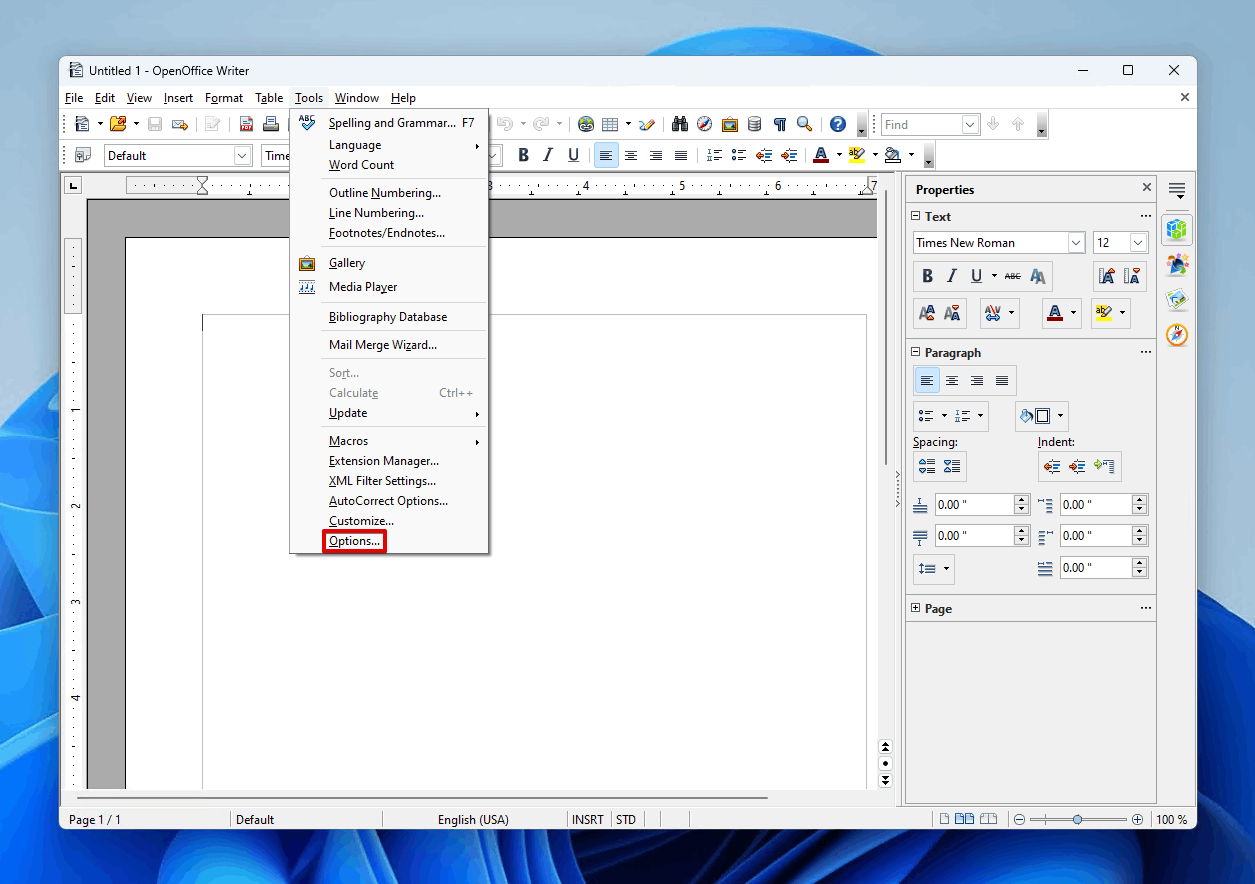
- Expand OpenOffice, then click Paths. Make a note of where your backups are being stored, then navigate to it in File Explorer.
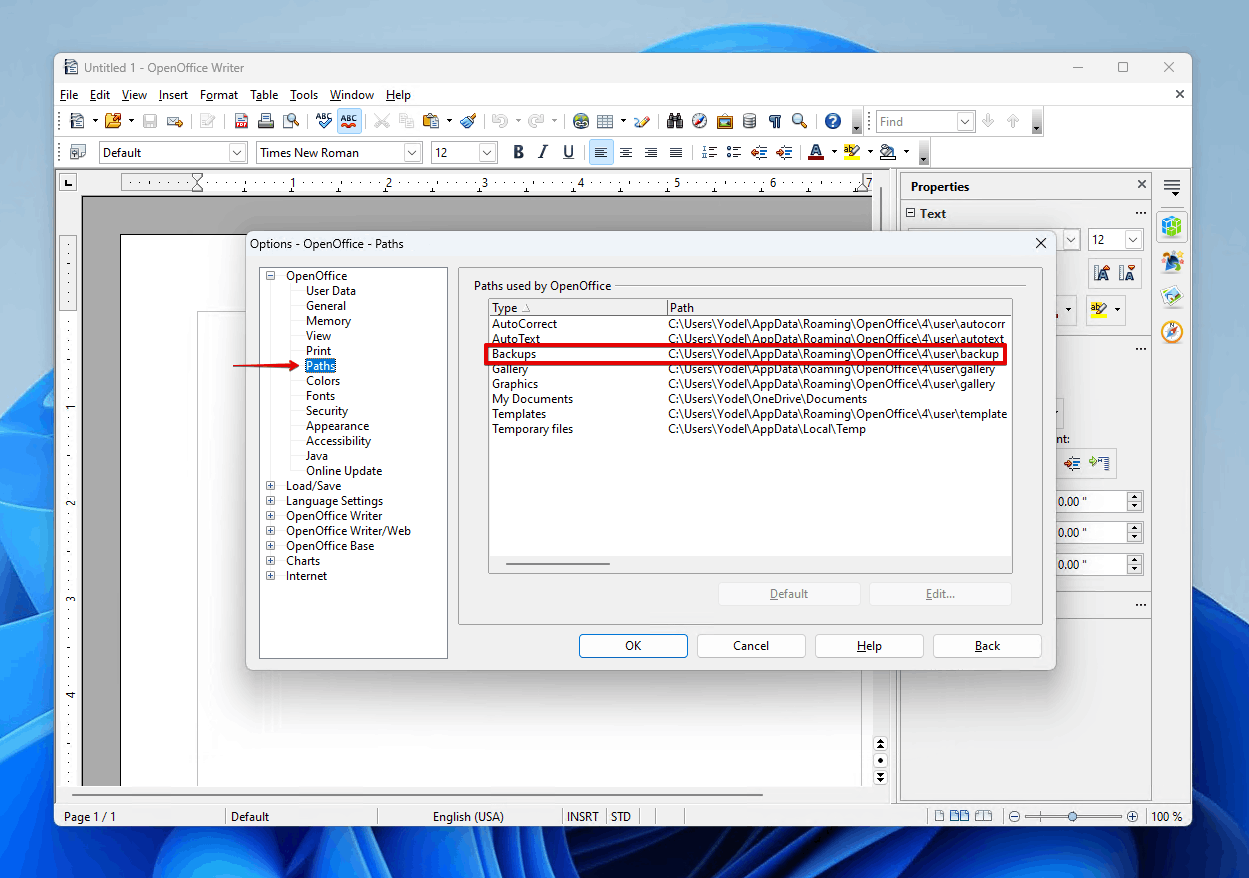
- Open the document, then save it to a new location.

How to Recover Files from a PC that Won’t Boot after Crash
If your computer no longer boots following the crash, the problem may be so severe that you need to perform more in-depth troubleshooting. Here are a few troubleshooting suggestions you can use to restore your Windows computer that crashed.
Method 1: Connect the Disk to Another PC
Internal drives can be removed and connected to another computer externally using a drive enclosure. Try connecting your drive to another computer, and then copying the files across to a safe storage device.
Method 2: Use Data Recovery Services
When there is no hope of fixing the problem yourself, you can rely on an expert instead. Using a data recovery service gives you the highest chance of recovering your data following a crash. It’s also used in other data loss situations that are beyond the help of recovery software, like when you need to recover data from a dead hard drive that has sustained physical damage. Bear in mind that, while this will yield the best results, it’s also the most costly option.
How to Fix a Crashing Computer
If your computer only crashed once but is otherwise working ok, it could have been a one-off occurrence. However, if your computer keeps crashing regularly, it points to a deeper problem. We’ve included some troubleshooting methods below to help you find and fix the issue.
Method 1: Check Temperature
Components that reach dangerous temperatures will shut down, causing your computer to crash. To test this, turn your computer on and use the program Open Hardware Monitor to see what temperatures your hardware is reaching.
If your hardware is overheating, improve the airflow throughout your computer by clearing the fans of dust. Reapplying thermal paste to your CPU and GPU may also be beneficial. Desktop users can add additional fans too, or rearrange the existing fans to promote better circulation.
Method 2: Check Hardware Connections
Making sure all of your hardware components are securely connected is a good idea. Take the side panel off your computer case (or the back panel off your laptop) and make sure that all components are connected firmly, especially the RAM and all storage devices.
Method 3: Boot in Safe Mode
When the crashes are being caused by a certain app, you can boot into Safe Mode to uninstall it. Safe Mode can also be used to perform additional troubleshooting steps and retrieve files from a crashed computer if it’s not booting like normal.
Here’s how you can boot into Windows with Safe Mode:
- Boot into Windows Recovery Environment (WinRE) using the advanced startup option found in Settings, or using your Windows installation media.
- Click Troubleshoot.
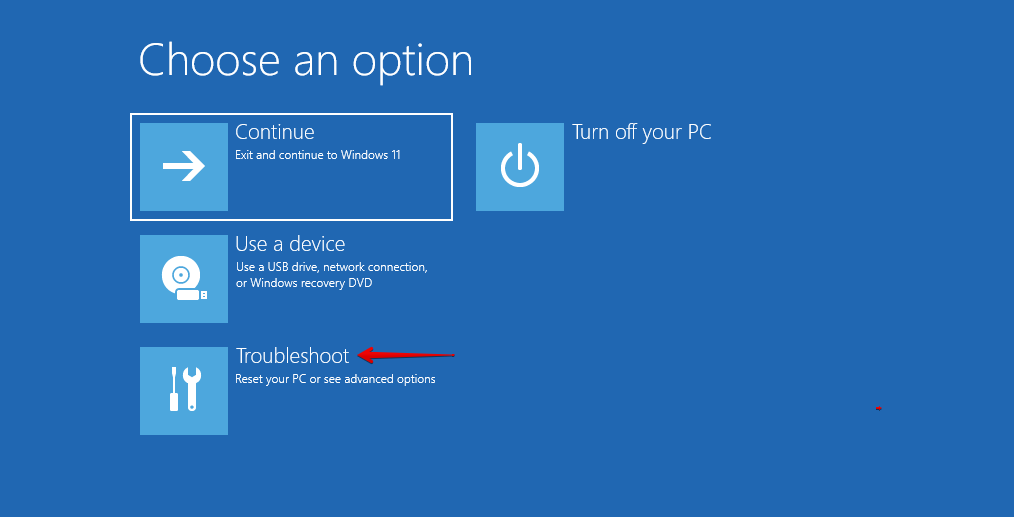
- Select Advanced options.

- Click Startup Settings.

- Click Restart.

- Press 4 to enter Safe Mode. Alternatively, you can press 5 to enter Safe Mode with Networking capabilities.
Once in Safe Mode, you can uninstall any problematic apps, updates, or drivers.
Method 4: Run System File Checker
Windows may be causing your computer to crash because some essential system files have become damaged or corrupted. You can fix this using System File Checker (SFC), which will scan for problematic files and replace them with a working copy.
This process can be performed using Command Prompt from WinRE if you can’t boot into Windows.
Follow these steps to run SFC:
- Right-click Start and click Terminal (Admin).
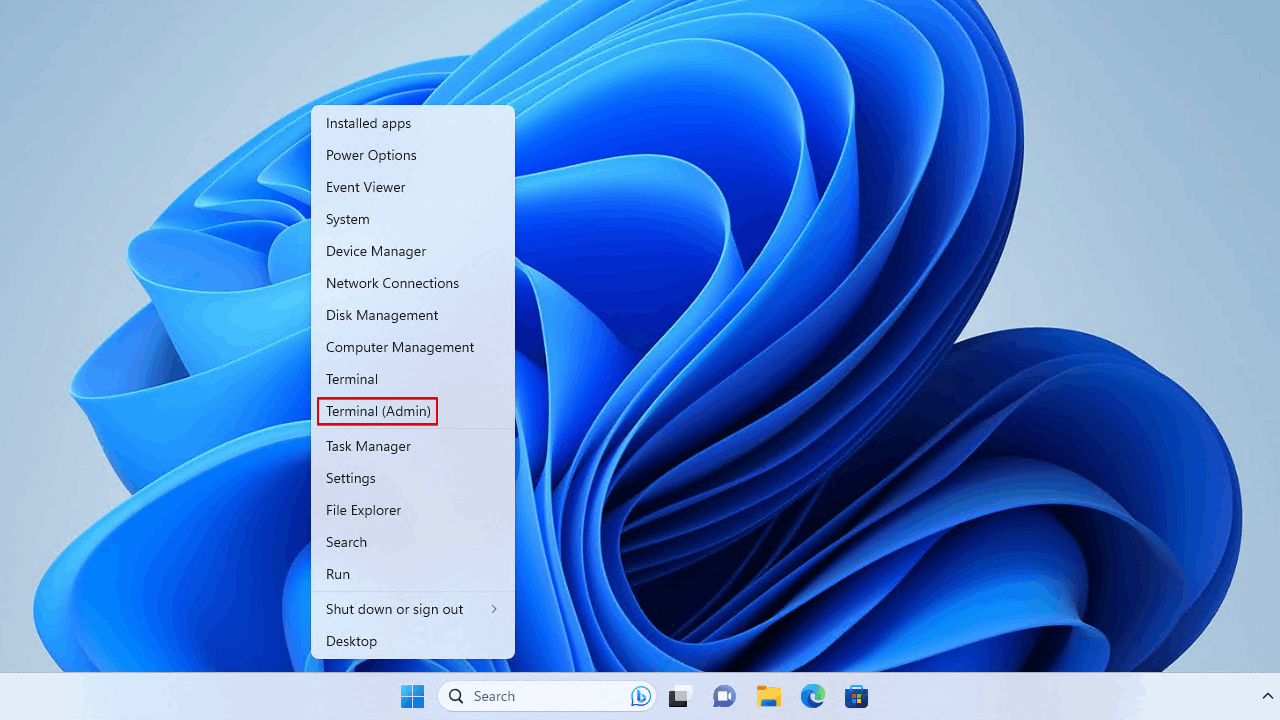
- Type
sfc /scannowand press Enter.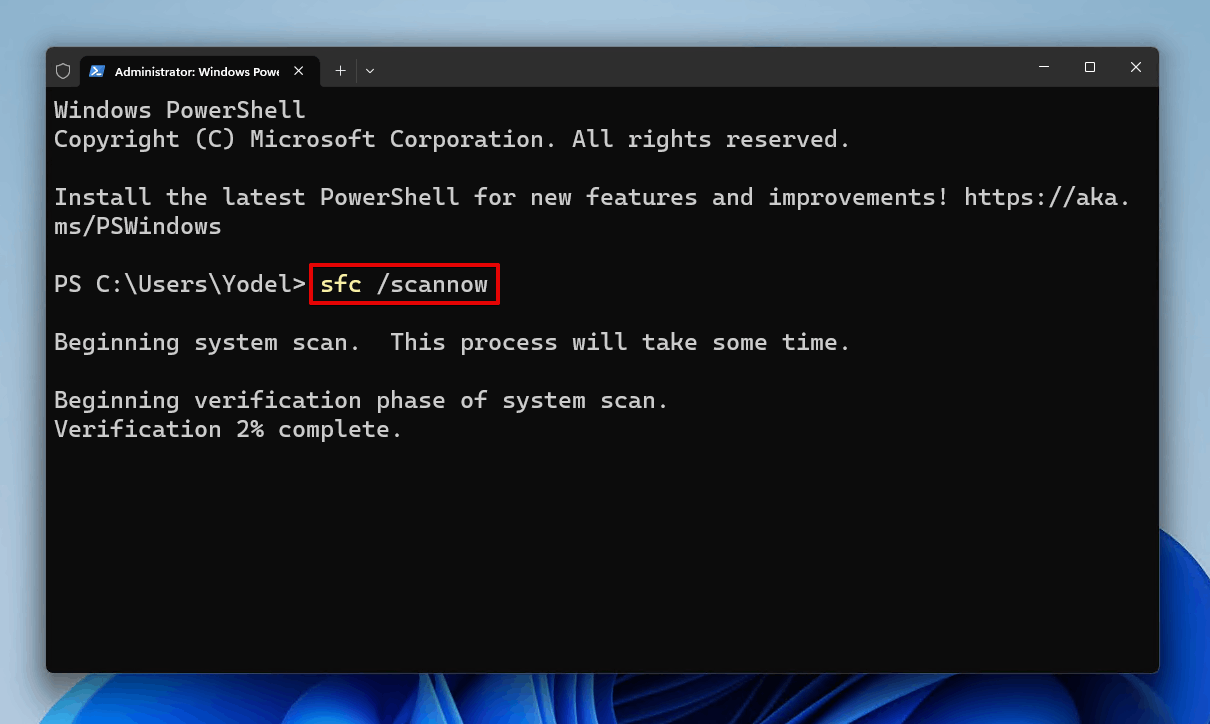
Method 5: Make Sure that the System Volume has Enough Space
A full system drive can not only cause degraded performance but also computer crashes if Windows doesn’t have enough reserved space to store temp system or update files. Free up some space from your system drive by deleting unwanted files and uninstalling unnecessary apps to see if it stops your crashes.
Method 6: Update Drivers
Drivers for your hardware may need to be updated or reinstalled to stop the crashes from occurring.
It’s a good idea to make sure all of your devices have drivers that support Windows 11, as some drivers that haven’t been updated for years may not be compatible.
We’ll show you how to update your drivers or reinstall them if they’ve become damaged or corrupted:
- Right-click Start and click Device Manager.

- Right-click the hardware component you want to update the drivers for, then click Update driver.
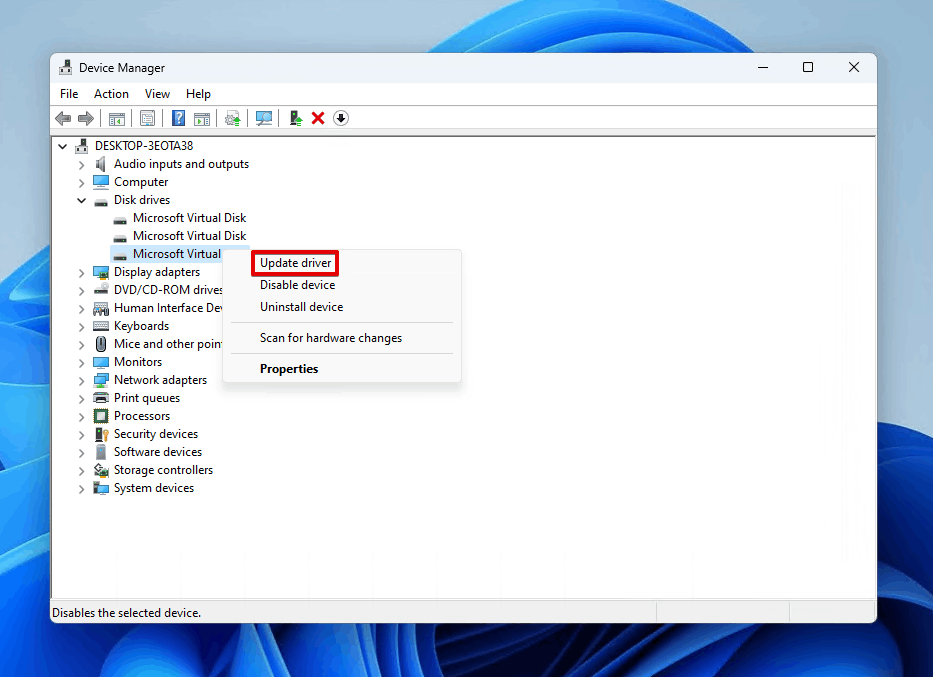
- Click Search automatically for drivers. If no updated drivers were found, proceed to the next step to reinstall the existing ones.
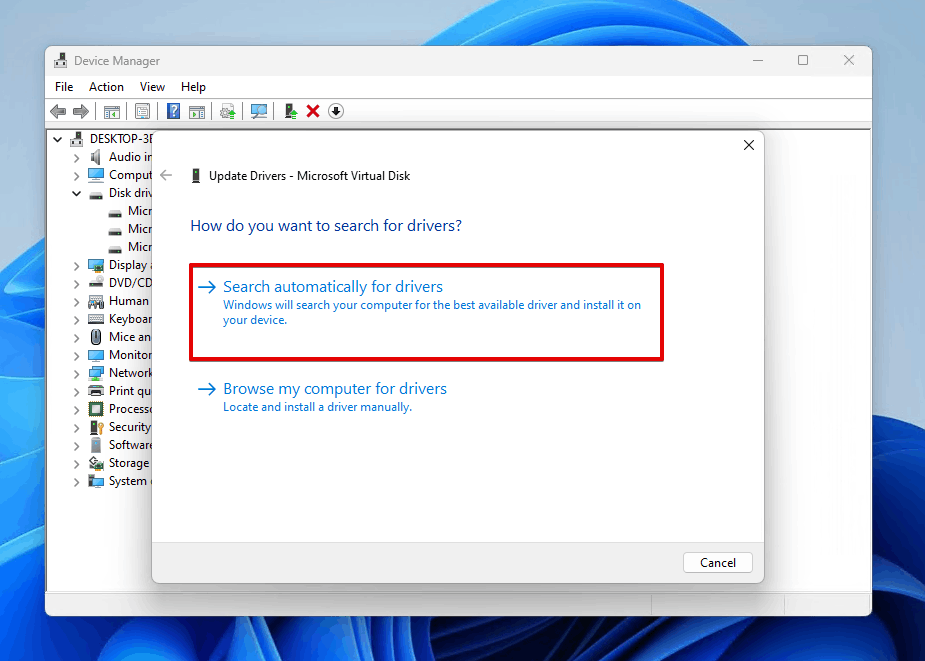
- Right-click the hardware component again and click Uninstall device.
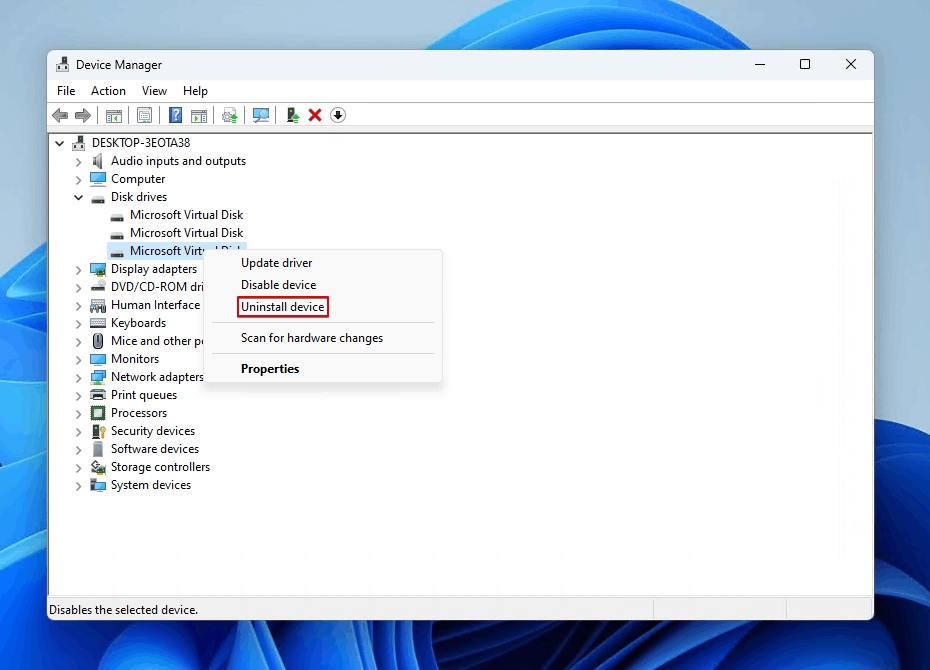
- Click Uninstall.
Once the drivers are uninstalled, restart your computer to force them to reinstall.
Method 7: Defragment Your Hard Drive
Over time, the data stored on your drive will become fragmented, which causes longer read times when trying to open your files. Although it’s unlikely to be the sole culprit behind your computer crashes, it can contribute to the problem as it causes more stress on your drive when the OS tries to boot up and access data.
This step should only be performed on HDDs. If performed on a SSD, it will consume some of the limited write cycles your NAND memory cells can handle, decreasing the overall lifespan of your SSD.
Here’s how you can perform hard drive defragmentation:
- In File Explorer, right-click the drive that crashed and click Properties.
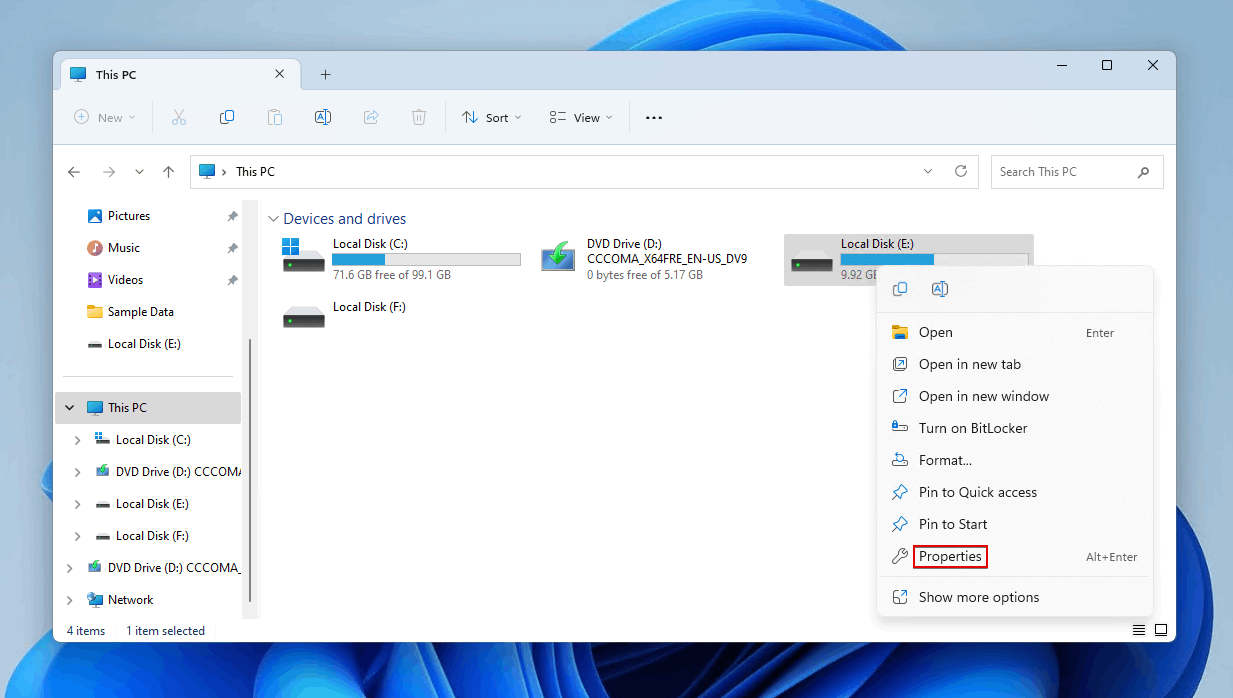
- Click Tools.
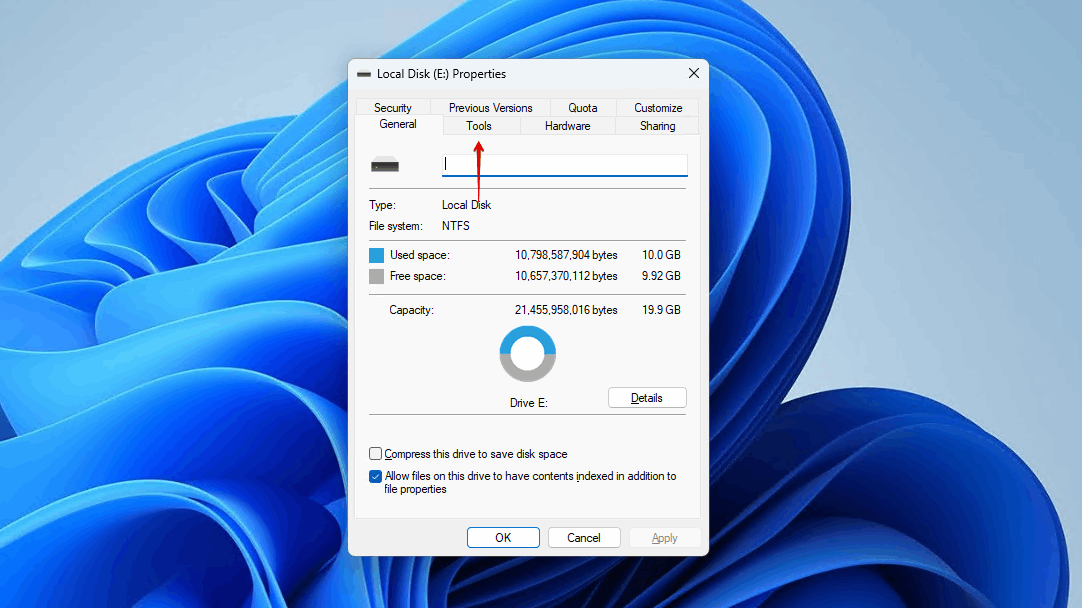
- Click Optimize.
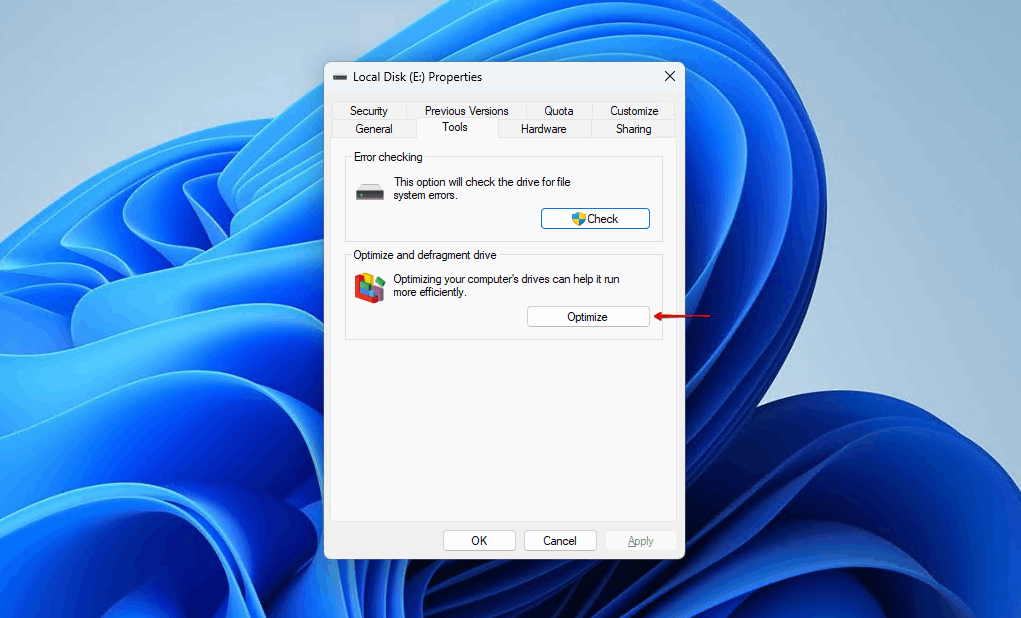
- Select the crashed drive, then click Optimize.
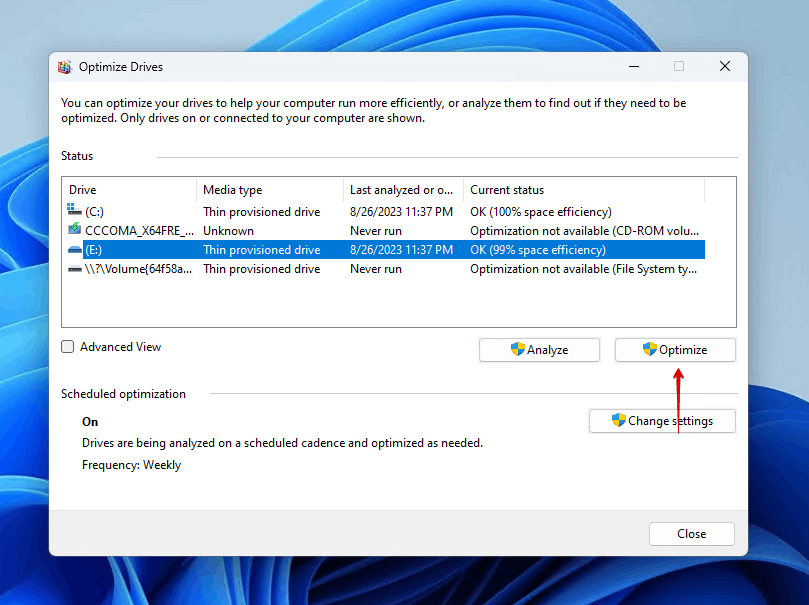
Method 8: Check for Viruses
Malware that has infected your computer can easily be addressed using an antimalware software tool. In this case, we’ll be making use of Microsoft Defender Antivirus, a full antimalware program that’s included with Windows 10, as well as later versions.
Follow these instructions to remove malware using Microsoft Defender:
- In File Explorer, right-click the crashed drive while holding Shift and click Scan with Microsoft Defender and it will immediately perform a quick scan.
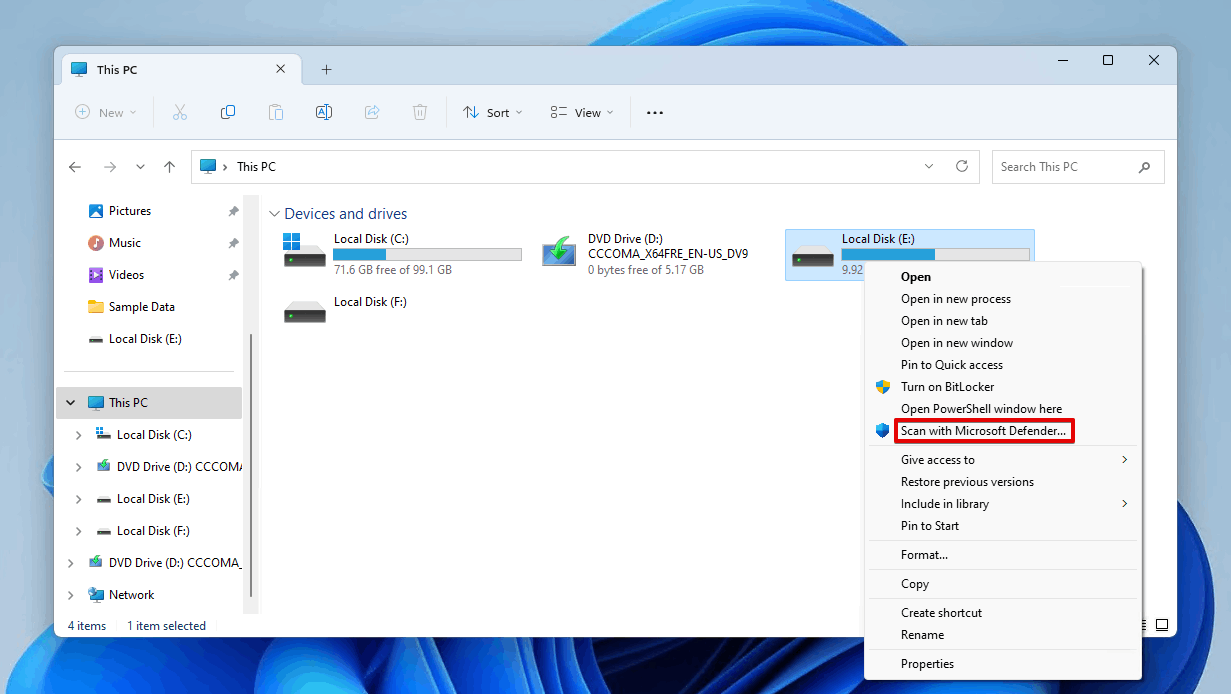
- If you want to perform a more comprehensive scan, select Microsoft Defender Antivirus (offline scan) and click Scan now.

Conclusion
We hope that the explanations and methods included in this guide have explained why your computer crashed and how to recover files that were lost by performing crashed drive data recovery. Remember, after you experience data loss, your first step should be to recover that data before doing anything else (including any unsaved files that were recovered by the program).
You can fix a computer that keeps crashing by managing temperatures, checking connections, running SFC, clearing up some space on your system drive, updating drivers, defragmenting your HDD, and performing malware removal.
If your computer isn’t booting after the crash, try connecting it to another computer to see if it’s readable. If it’s not, reach out to a data recovery service to get the data back.




